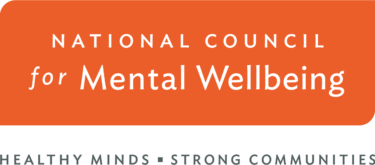Sept. 10-16 marks National Suicide Prevention Week, a time to further our understanding of suicide and prevention. Here are some resources and learning opportunities to help you do that:
Suicide Facts & Figures
According to the Centers for Disease Control and Prevention (CDC), the number of deaths by suicide increased 2.6% from 2021 to 2022. Here is some additional information about suicide in America from Suicide Awareness Voices of Education (SAVE):
- In 2021, 48,183 Americans died by suicide.
- Suicide is the 11th leading cause of death in the U.S.
- Every day, approximately 132 Americans die by suicide.
- There is one suicide death in the U.S. every 10.9 minutes.
- Suicide is the third leading cause of death for 15-to-24-year-old Americans.
- The highest suicide rates (per 100,000) in the U.S. are among white males (26.4), followed by American Indian/Alaska Native males (25) and Black males (14.1).
- There is one suicide death for every estimated 25 attempts.
- There are approximately 1,204,575 annual attempts in the U.S. (using 25:1 ratio), or one attempt every 26.2 seconds.
Learn more and access available resources:
- American Foundation for Suicide Prevention (AFSP)
- National Action Alliance for Suicide Prevention
- Suicide Prevention Resource Center (SPRC)
- American Hospital Association (AHA)
- Substance Abuse and Mental Health Services Administration (SAMHSA)
- CDC’s Suicide Prevention Resource for Action
- 988 Suicide & Crisis Lifeline’s addition of nationwide American Sign Language (ASL)
- Now Matters Now
- Suicide Is Different
- Zero Suicide
Suicide Prevention Awareness
Bring attention to suicide prevention this month by downloading:
- SAMHSA 988 Lifeline/Suicide Prevention Month resources
- SAMHSA 988 Lifeline/Suicide Prevention Month resources (Spanish)
- CDC’s Suicide Prevention Month Partner Toolkit
- National Institute of Mental Health (NIMH) Digital Toolkit
- Action Alliance Framework for Successful Messaging
- Access free suicide prevention online training resources with MHRRG.
Suicide Prevention & Crisis Response
The launch of the 988 Suicide & Crisis Lifeline on July 16, 2022, marked a turning point in mental health and substance use awareness and support in America. Learn more from SAMHSA:
- About the 988 Lifeline and FAQs
- 988 Lifeline’s First Year: A Network of Hope
- 988 Suicide & Crisis Lifeline: The First Year and Beyond (Issue Brief)
- 988 Lifeline Messaging Framework
- SAMHSA 988 Lifeline Partner Toolkit
- SAMHSA suicide prevention publications
Explore the National Council’s 988 Lifeline resources and content:
- 988 Suicide & Crisis Lifeline Fact Sheet
- Fulfilling the Promise of 988
- Implementing 988 and Future Priorities
- Roadmap to the Ideal Crisis System
- 988 and 911: Similarities and Differences
- Exploring the 988 Implementation Guidance Playbooks
- 988, Suicide Prevention and Community-based Crisis Services
- 988 and Mobile Crisis Response Through CCBHCs
- One Year into 988, Sustained Investment Needed to Expand Crisis Care System, Mental Health Workforce
Opportunities for Impact
Make a mark this month and throughout the year:
- Attend Understanding the 988 Lifeline LGBTQ+ Landscape, our webinar with Vibrant Emotional Health about increasing 988’s accessibility, on Thursday, Sept. 21 (1-2 p.m. ET).
- Register for our webinar, Care Transitions Practices for Suicidal Individuals, on Friday, Sept. 22 (2-3 p.m. ET), to understand what elevates suicide risk during various care transitions.
- Sign up for Hill Day at Home on Oct. 18 to advocate for 988 Lifeline implementation legislation.
- Write your legislator to help the 988 Lifeline become more sustainable and serve more people.
- Get trained in Mental Health First Aid to learn how to help someone who is developing a mental health problem or experiencing a mental health crisis.
- Join our Crisis Response Interest Group to strengthen crisis care delivery (a National Council member benefit).
Read our thought leadership to educate others:
- CCBHCs and Crisis Response Systems
- Psychiatric Leadership in Crisis Systems: The Role of the Crisis Services Medical Director
- Suicide Prevention and Management
- Best Practices for Suicide Prevention to Postvention
- Suicide Prevention Within the LGBTQ+ Community
- Why You Shouldn’t Be Afraid to Talk About Suicide
- Crisis Services Leadership: Keeping Staff Wellness in Mind
- The Face of Mental Health and Substance Use Challenges: It’s All of Us
- Dismantling Mental Health Stigma in Public Safety
- Suicide is Preventable: How to Help with Mental Health First Aid
- Thriving in Adolescence with Meaningful Relationships: Considerations for Integrated Care Staff
For Immediate Help
If you or someone you know is experiencing a mental health crisis, call or text 988 immediately. You can also chat with the 988 Suicide & Crisis Lifeline at 988lifeline.org.
